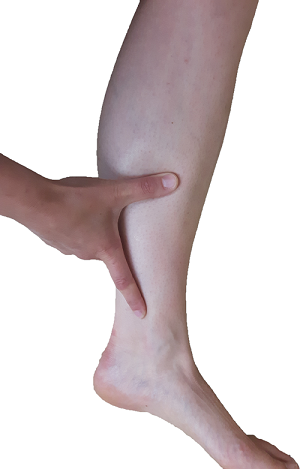
Shin Splints (Medial Tibial Stress Syndrome)
What is it?
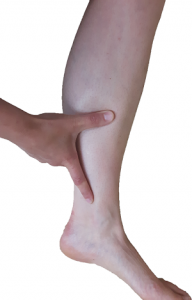
Shin splints, or Medial Tibial Stress Syndrome (MTSS) is characterized by pain in on the inside of the lower leg, specifically in the lower two thirds (see figure 1). Overuse and strain to the bone, from the attaching structures, causes this pain. Pain on the outside of the lower leg is caused from different muscles, which I will cover in a separate post!
What will I see and feel?
When pushing on the bone or muscle on the inside of the lower leg, this creates pain. There may be a “lump” or muscle tightness in this area as well. Typically, pain occurs during or after activity on the inside of the lower leg. Some people have the feeling of the muscles pulling on the bone when they take a step.
Causes
Shin splints are caused from overworking the structures in the lower leg. This can be from activity, mechanical factors, or a combination of the two.
Activity
An increase or change in activity may lead to pain because the leg is not able to handle the stress. It is similar to doing an activity or sport you haven’t played for a while, and the next day you are sore in areas you typically aren’t sore in. The muscles need time to adapt and strengthen so they can respond appropriately to the stress.
Mechanical
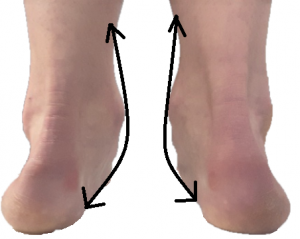
With arch collapse or overpronation, the muscles become overworked. The muscles running along the inside of the lower leg attach to the bottom of the foot to support the arch. When arch collapse or overpronation occurs, these muscles have increased strain.
Why now?
Factors such as activity change, footwear, foot changes and age may trigger the shin splints. Sometimes it may be hard to determine the exact trigger as the pain may be a combination of factors. The pain may also be triggered from an accumulation of the factors overtime.
Activity Change
As mentioned in the causes section above, a change in activity can be too much for the body to handle, which creates pain. This can be prevented by gradually increasing the activity level and intensity to allow the body to adapt.
Footwear
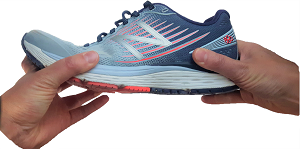 Inappropriate footwear may lead to pain without the appropriate support and fit. For more information on proper shoes, see last month’s blog post.
Inappropriate footwear may lead to pain without the appropriate support and fit. For more information on proper shoes, see last month’s blog post.
When shoes need to be replaced, you may see the sole worn-down, and/or the front of the shoe bending upwards. A worn-down sole may change the way you walk due to an increased angle of the shoe. This causes the foot to angle when walking, and the muscles become overworked and overstrained. When the front of the shoe bends upwards, this is a sign that the midsole (provides shock absorption) is wearing out. With less shock absorption, the force travels into the foot or leg.
Foot Change
Our foot may change over time due to an injury, a condition, surgery, or even as we age. More strain on the muscles occur when the arch collapses. For more information about arch collapse, see the Pes Planus (flat feet) blog from last month.
Age
As we age, flexibility and strength decreases, and we are not able to heal as quickly. The same routine may be too much for the body to handle. The other factor to consider is that over time, the damage or strain may accumulate until the body cannot handle to strain, which leads to pain.
Treatments
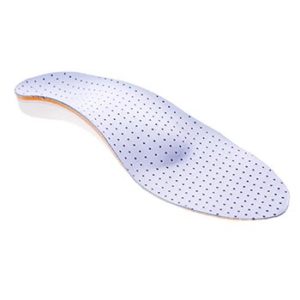
Orthotics
Custom orthotics support the arch to prevent and relieve pain associated with shin splints. Supporting the arch prevents the muscles from becoming overworked and strained. Over the counter inserts are occasionally used to prevent rather than relieve this pain as the support is generic and provides less support than custom.
Strengthening
It is important to strengthen the feet and ankles to help prevent the shin splints from recurring. Stronger muscles help the body handle more strain before pain occurs. The effectiveness of strengthening depends on the severity and mobility of the feet.
If you have any questions, feel free to contact us!
You must be logged in to post a comment.

Comments (1)
Pingback: Peroneal Muscle Pain | On the Ball Orthotics, Barrie